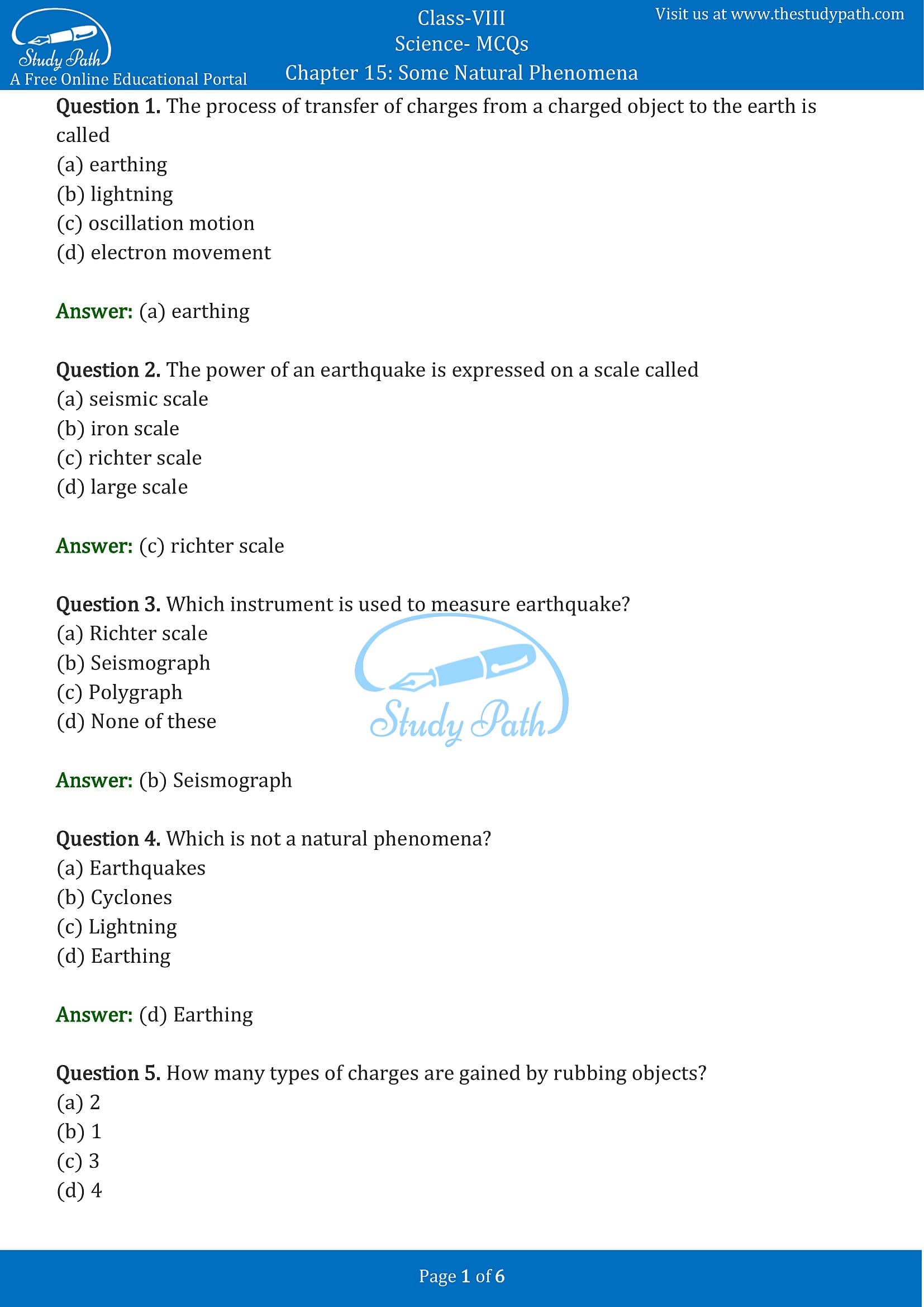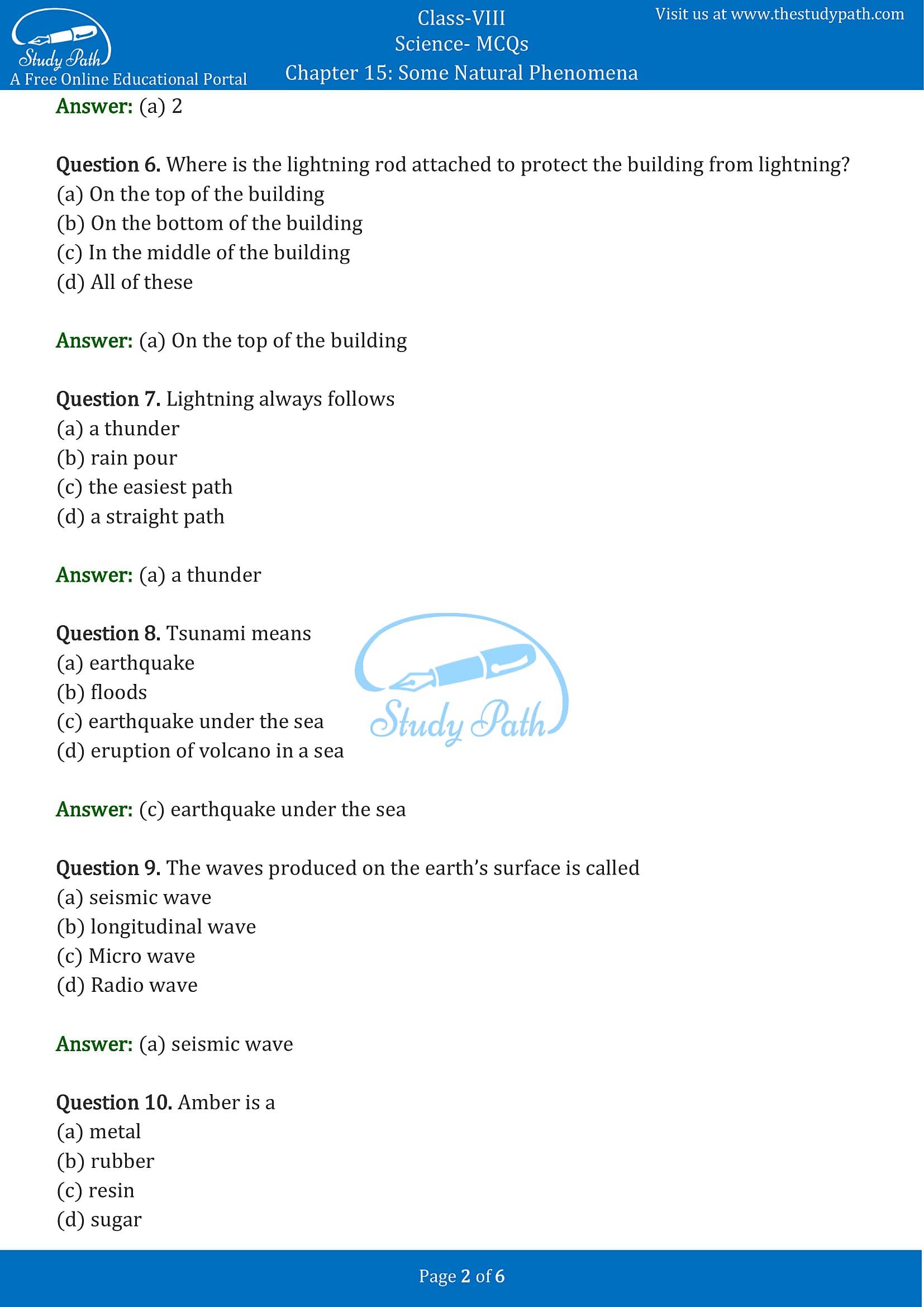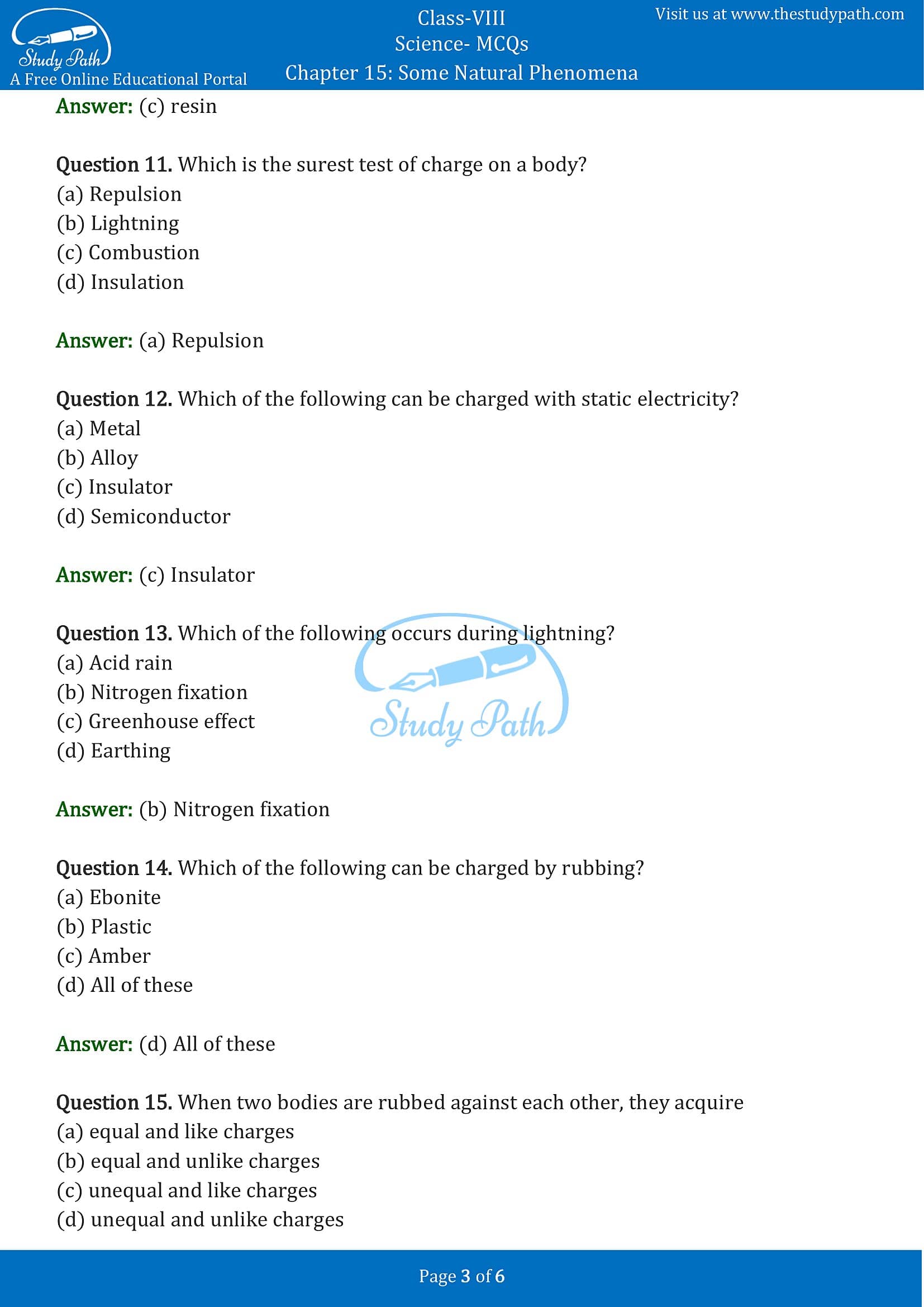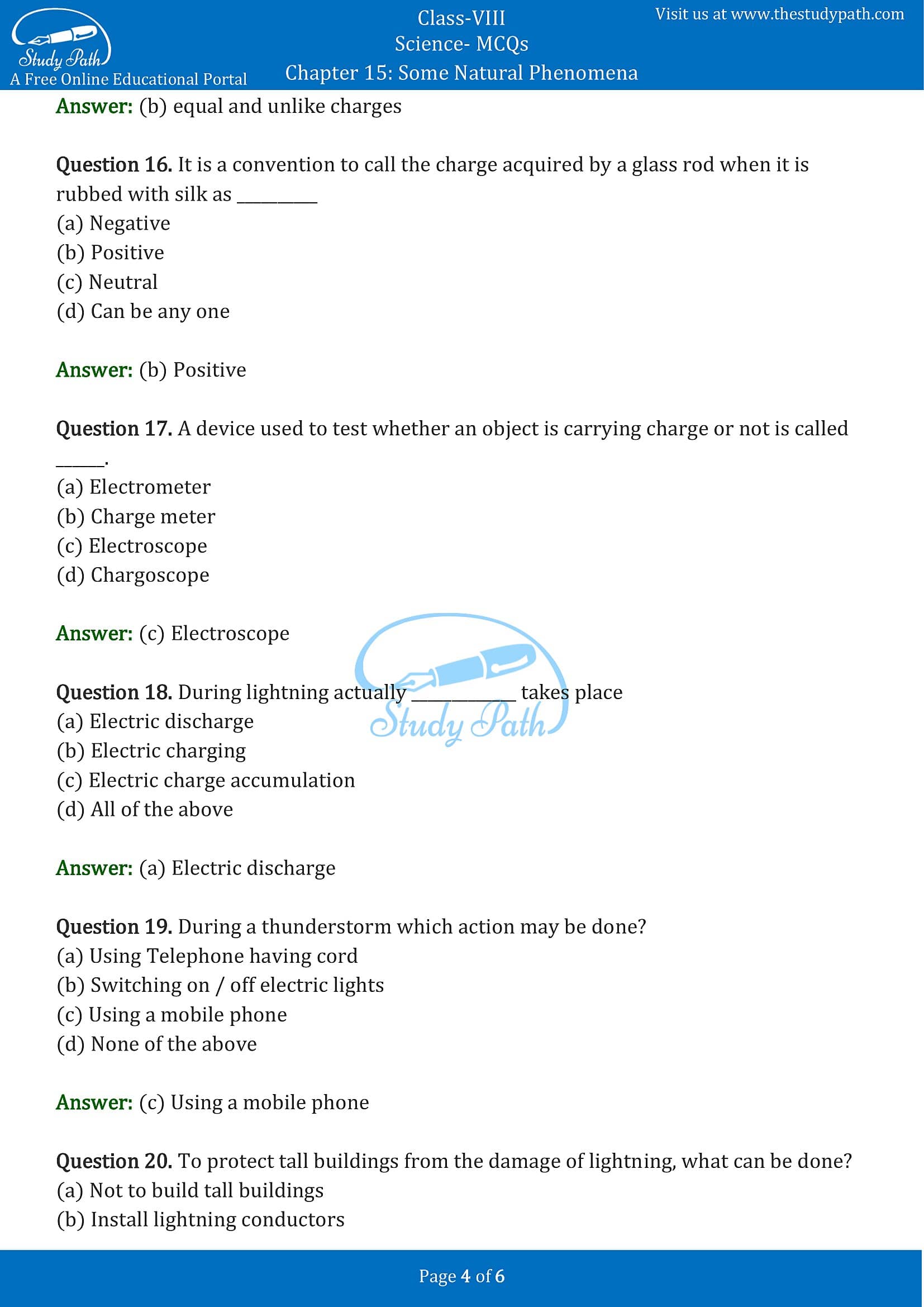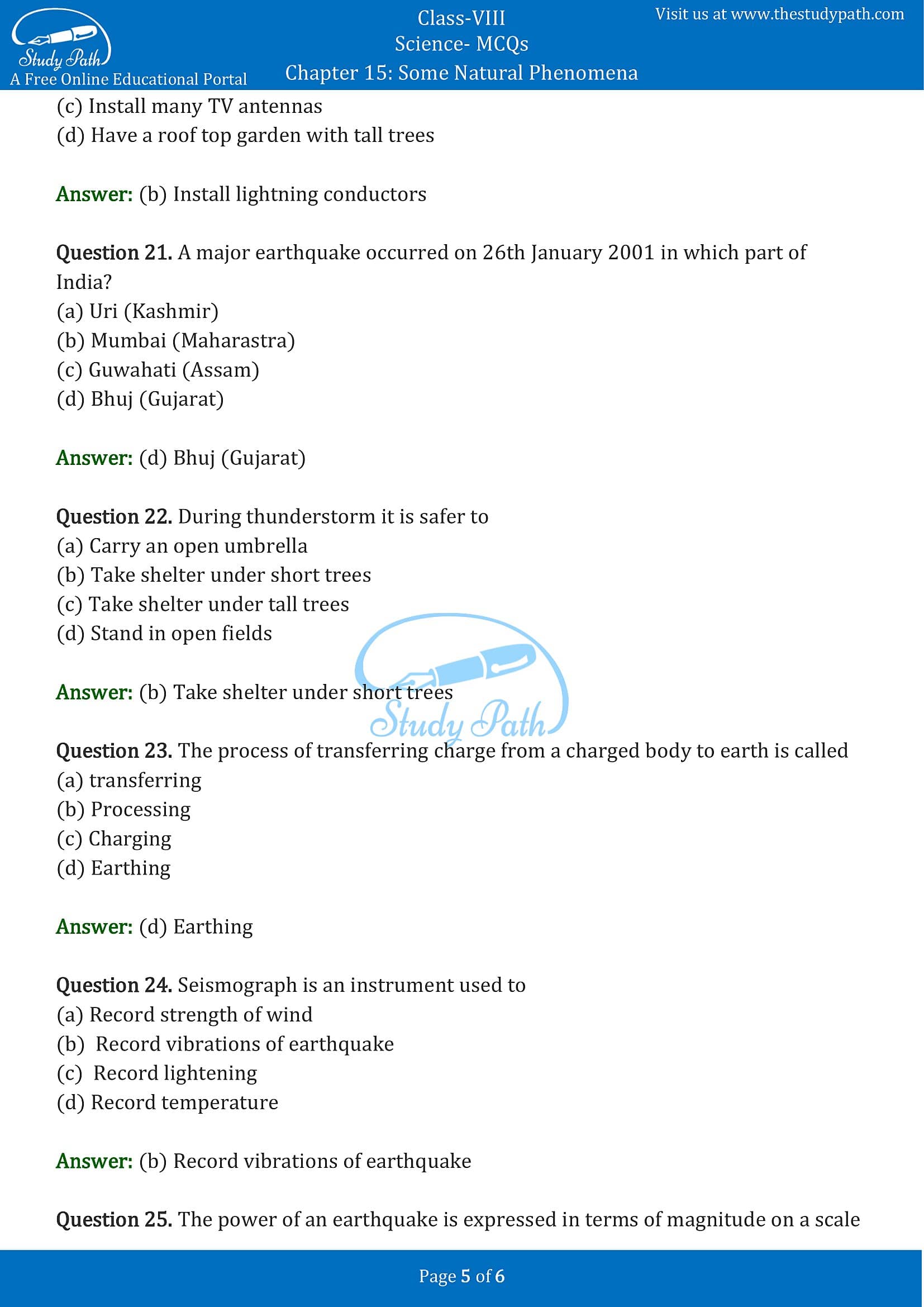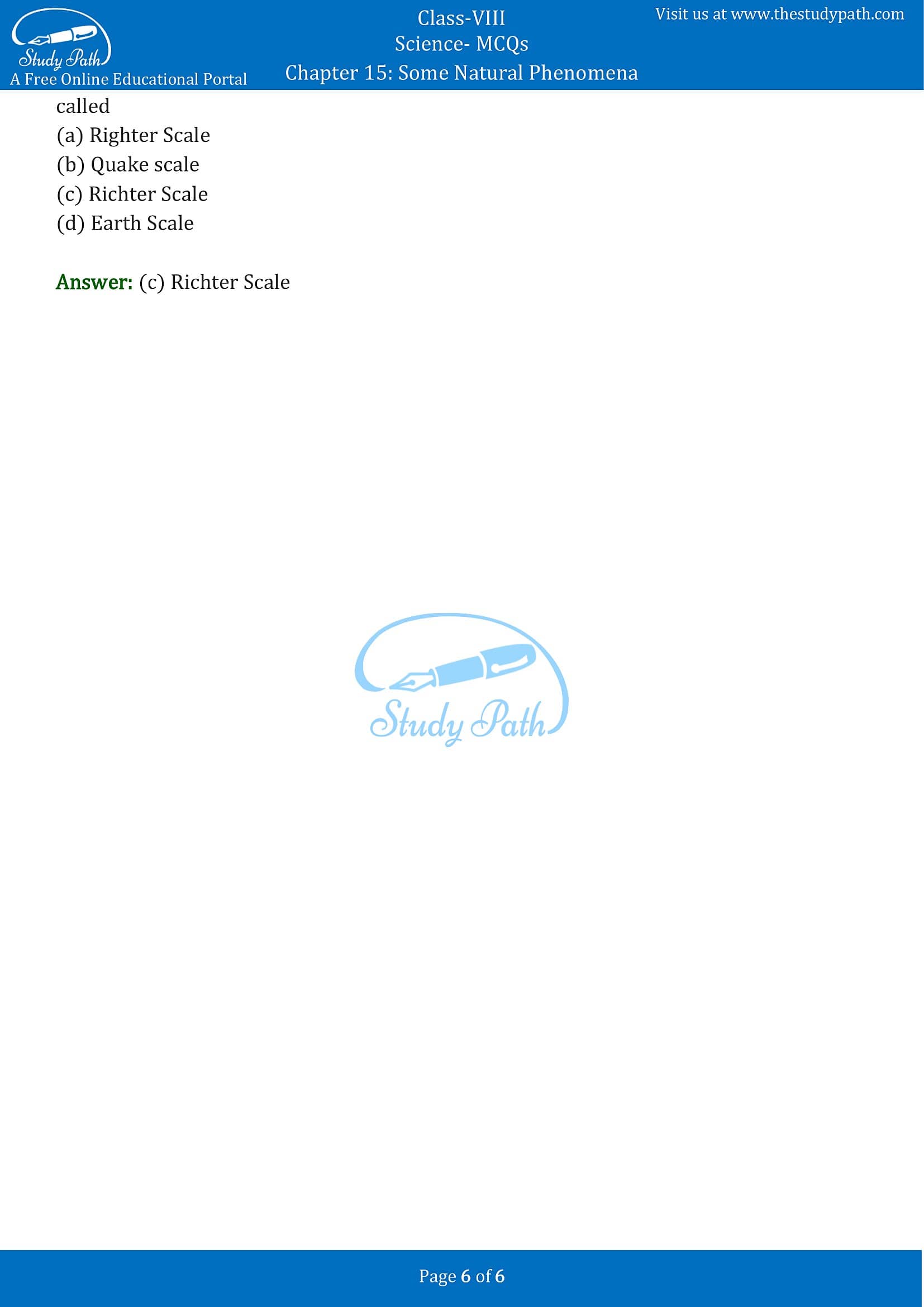Class 8 Science Chapter 15 Some Natural Phenomena MCQ with Answers
Class 8 Science Chapter 15 Some Natural Phenomena MCQ (Multiple Choice Questions) with Answers is available here in PDF format. CBSE Class 8 Science Some Natural Phenomena Objective Questions helps the students to understand the concepts thoroughly and to score good marks. Practising these MCQs will help you to answer every question that is being asked in the exams.
At Study Path, you can download PDF of Multiple Choice Questions for Class 8 Chapter 15 Some Natural Phenomena with Answers. We prepared these MCQs on the basis latest exam Pattern. Students can solve NCERT Class 8 Science Some Natural Phenomena MCQs before the exam to know their preparation level.
Some Natural Phenomena Class 8 MCQ with Answers
Multiple Choice Questions (MCQs)
Question 1. The process of transfer of charges from a charged object to the earth is called
(a) earthing
(b) lightning
(c) oscillation motion
(d) electron movement
Answer: (a) earthing
Question 2. The power of an earthquake is expressed on a scale called
(a) seismic scale
(b) iron scale
(c) richter scale
(d) large scale
Answer: (c) richter scale
Question 3. Which instrument is used to measure earthquake?
(a) Richter scale
(b) Seismograph
(c) Polygraph
(d) None of these
Answer: (b) Seismograph
Question 4. Which is not a natural phenomena?
(a) Earthquakes
(b) Cyclones
(c) Lightning
(d) Earthing
Answer: (d) Earthing
Question 5. How many types of charges are gained by rubbing objects?
(a) 2
(b) 1
(c) 3
(d) 4
Answer: (a) 2
Question 6. Where is the lightning rod attached to protect the building from lightning?
(a) On the top of the building
(b) On the bottom of the building
(c) In the middle of the building
(d) All of these
Answer: (a) On the top of the building
Question 7. Lightning always follows
(a) a thunder
(b) rain pour
(c) the easiest path
(d) a straight path
Answer: (a) a thunder
Question 8. Tsunami means
(a) earthquake
(b) floods
(c) earthquake under the sea
(d) eruption of volcano in a sea
Answer: (c) earthquake under the sea
Question 9. The waves produced on the earth’s surface is called
(a) seismic wave
(b) longitudinal wave
(c) Micro wave
(d) Radio wave
Answer: (a) seismic wave
Question 10. Amber is a
(a) metal
(b) rubber
(c) resin
(d) sugar
Answer: (c) resin
Question 11. Which is the surest test of charge on a body?
(a) Repulsion
(b) Lightning
(c) Combustion
(d) Insulation
Answer: (a) Repulsion
Question 12. Which of the following can be charged with static electricity?
(a) Metal
(b) Alloy
(c) Insulator
(d) Semiconductor
Answer: (c) Insulator
Question 13. Which of the following occurs during lightning?
(a) Acid rain
(b) Nitrogen fixation
(c) Greenhouse effect
(d) Earthing
Answer: (b) Nitrogen fixation
Question 14. Which of the following can be charged by rubbing?
(a) Ebonite
(b) Plastic
(c) Amber
(d) All of these
Answer: (d) All of these
Question 15. When two bodies are rubbed against each other, they acquire
(a) equal and like charges
(b) equal and unlike charges
(c) unequal and like charges
(d) unequal and unlike charges
Answer: (b) equal and unlike charges
Question 16. It is a convention to call the charge acquired by a glass rod when it is rubbed with silk as __________
(a) Negative
(b) Positive
(c) Neutral
(d) Can be any one
Answer: (b) Positive
Question 17. A device used to test whether an object is carrying charge or not is called ______.
(a) Electrometer
(b) Charge meter
(c) Electroscope
(d) Chargoscope
Answer: (c) Electroscope
Question 18. During lightning actually _____________ takes place
(a) Electric discharge
(b) Electric charging
(c) Electric charge accumulation
(d) All of the above
Answer: (a) Electric discharge
Question 19. During a thunderstorm which action may be done?
(a) Using Telephone having cord
(b) Switching on / off electric lights
(c) Using a mobile phone
(d) None of the above
Answer: (c) Using a mobile phone
Question 20. To protect tall buildings from the damage of lightning, what can be done?
(a) Not to build tall buildings
(b) Install lightning conductors
(c) Install many TV antennas
(d) Have a rooftop garden with tall trees
Answer: (b) Install lightning conductors
Question 21. A major earthquake occurred on 26th January 2001 in which part of India?
(a) Uri (Kashmir)
(b) Mumbai (Maharastra)
(c) Guwahati (Assam)
(d) Bhuj (Gujarat)
Answer: (d) Bhuj (Gujarat)
Question 22. During thunderstorm it is safer to
(a) Carry an open umbrella
(b) Take shelter under short trees
(c) Take shelter under tall trees
(d) Stand in open fields
Answer: (b) Take shelter under short trees
Question 23. The process of transferring charge from a charged body to earth is called
(a) transferring
(b) Processing
(c) Charging
(d) Earthing
Answer: (d) Earthing
Question 24. Seismograph is an instrument used to
(a) Record strength of wind
(b) Record vibrations of an earthquake
(c) Record lightening
(d) Record temperature
Answer: (b) Record vibrations of an earthquake
Question 25. The power of an earthquake is expressed in terms of magnitude on a scale called
(a) Righter Scale
(b) Quake scale
(c) Richter Scale
(d) Earth Scale
Answer: (c) Richter Scale
At Study Path, you can also learn more about science chapter 15 Some Natural Phenomena by accessing the free exhaustive list of study materials and resources related to the chapter such as NCERT Solutions, Important Questions and Extra Questions.
